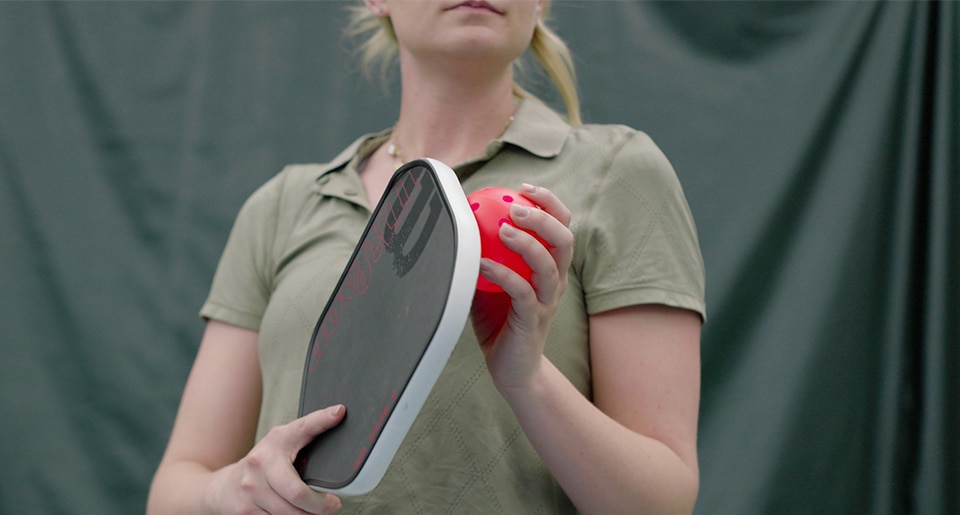
Pioneering Pickleball Performance with Wilson
“Dow offers extensive material options and strong R&D capabilities, meaning we get the opportunity to try out several solutions to make our racket sports gear even better. This sort of testing flexibility allows our teams to streamline innovation — it helped us successfully cross-develop player-preferred pickleballs and tennis balls.”
- Chloe Lee, Advanced Materials Engineer at Wilson Sporting Goods
Pickleball is often described as a hybrid of tennis, badminton and ping pong, and is celebrated for its enjoyable gameplay, ease of learning and accessibility. Despite being invented in the 1960s, it’s now the fastest-growing sport in the United States — according to the Sports & Fitness Industry Association (SFIA), participation has grown by more than 158.6% since 2021. This unprecedented growth was onset by the COVID-19 pandemic, as the racket sport offered a safe yet social exercise, requiring only a court, paddle and ball.
Wilson Sporting Goods was ahead of the craze and began to ideate its first pickleball design in 2018. Around that same time, they had enlisted Dow’s materials science expertise and R&D capabilities to help create a more sustainable tennis ball. Despite player satisfaction stalling innovation for over 50 years, Wilson saw an opportunity: traditional non-recyclable, pressurized cans helped tennis balls maintain bounce but contributed to environmental waste. Our teams worked hand-in-hand to ultimately develop the Triniti tennis ball, integrated with Dow plastomer technologies to help offer a lively bounce, consistent performance and durability without pressurized packaging.
Building on our successful tennis ball collaboration — and shared commitment to advancing performance and sustainability in sporting goods — our teams shifted gears to tackle optimizing the ball for the fastest-growing sport.
THE CHALLENGE
Producing Pickleballs that Push the Limits of Playability
By the time the Triniti ball launched, Wilson had also released its first pickleball design: the TRU 32. It was a rough-to-the-touch injection-molded pickleball, comprising of an innovative proprietary formula. With an equally distributed 32-hole pattern, it offered improved flight stability when compared to traditional 40-hole options. Now that Wilson had this initial design nailed down, they were ready to elevate it for professional-grade performance, and knew Dow could help.
Our teams embarked on a mission to optimize the TRU 32, exploring the benefits of various Dow materials to develop a design and composition that would offer superior consistency, durability and speed. Leveraging our learnings from the Triniti ball, we collaborated on a multitude of prototypes until we landed on a next-level pickleball.
THE SOLUTION
Serving Up Player-Preferred Pickleballs
Integrated with Dow elastomer technologies, the TRU 32 Pro delivers the same dependable consistency as TRU 32 but with enhanced speed and liveliness, making it ideal for advanced competitive gameplay. Its patented hole pattern creates consistent flight and bounce characteristics that complement the fast, responsive nature of its composition. Manufactured in the USA with imported components, the ball is USA Pickleball approved for outdoor competitive play and introduced new levels of pickleball performance. Building on this design, our teams also recently collaborated on a version specifically for indoor play — the TRU 32 Indoor ball.
Setting New Standards in Racket Sport Technology
The collaborations between Dow and Wilson exemplify the power of partnership in advancing innovation and sustainability. By leveraging our combined expertise and passion for advancing sport, we’ve tackled key issues in racket sport balls such as durability and performance, creating breakthrough products like the Triniti tennis balls and TRU 32 Pro pickleball that enhance game play for everyday players and professionals alike. Our innovative designs mark significant progress in performance and sustainability, and we anticipate many more to come. Together, we’re not just meeting the standards in the world of sporting goods — we’re setting them.





